表关系
数据库的操作,表字段的设计,一般都由于图形化界面工具Navicat完成。
而表中数据的增删改查,需要熟悉sql语句。
一对一
一对一:一个A对应一个B,一个B对应一个A
- 将A或B任意一张表的主键设置为外键
一对多
一对多:一个A对应多个B,一个B对应一个A。称A和B是一对多,B和A时多对一
- 在多的一端设置外键,对应到另一张表的主键
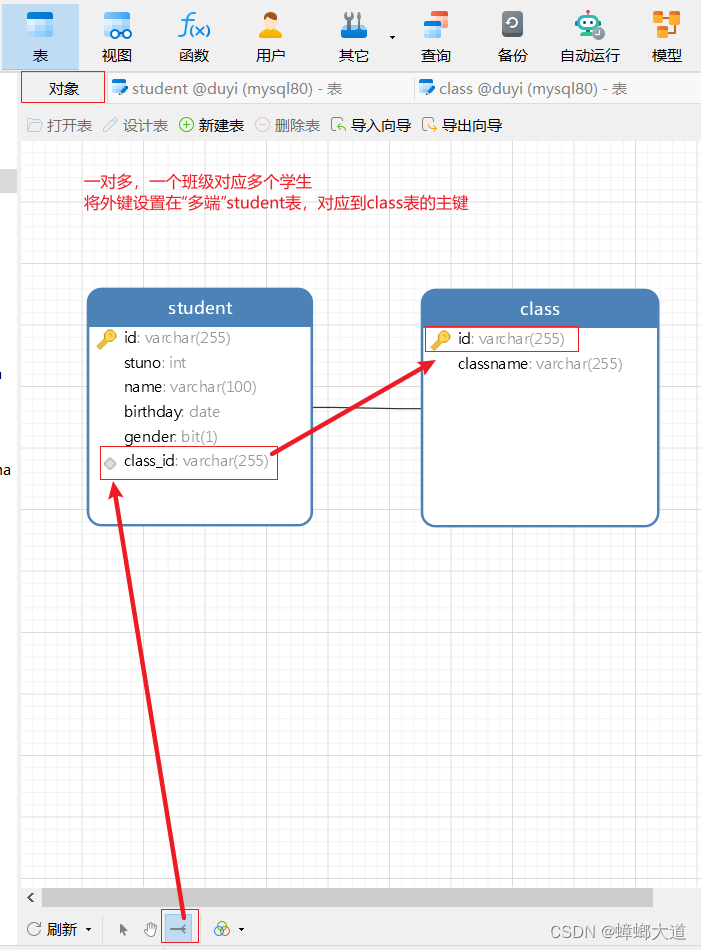
添加完成:

多对多
多对多:一个A对应多个B,一个B对应多个A
- 新建一张关系表,关系表至少包含两个外键,分别对应到A,B
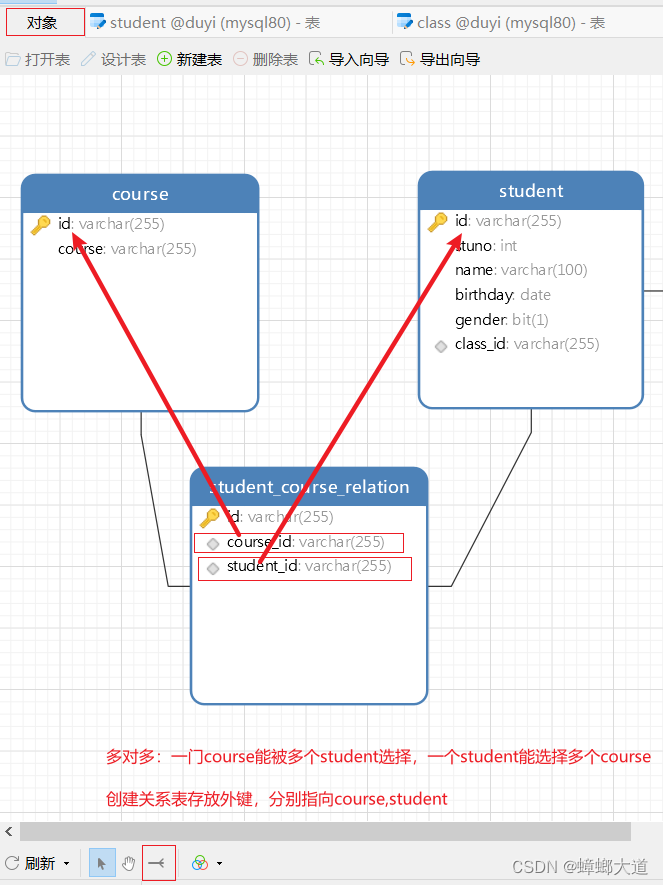
数据的增删改查
增删改
-- 1.增加数据
INSERT INTO `user` ( `name`, `age`) VALUES ('cjc', 100);
INSERT INTO `user` ( `name`, `age`) VALUES ('ccc', 999);
INSERT INTO `user` ( `name`, `age`) VALUES ('aaa', 111);
-- 2.删除数据
-- 删除所有数据
DELETE FROM `user`
DELETE FROM `user` WHERE `name` = 'aaa'
-- 3.修改数据
UPDATE `user` SET `name` = 'CJC',`age` = 10000 WHERE `name` = 'cjc'
-- 修改数据时,手动加上时间的更新
UPDATE `user` SET `name` = 'CCC',`age` = 99999,`updateTime` = CURRENT_TIMESTAMP WHERE `name` = 'ccc'
-- 修改了数据,根据当前时间戳更新updateTime
ALTER TABLE `user` ADD `updateTime` TIMESTAMP DEFAULT CURRENT_TIMESTAMP ON UPDATE CURRENT_TIMESTAMP
单表查询
select…from…
-- 额外的一列
SELECT id, loginid, loginpwd, 'abc' as '额外的一列' from `user`;
-- 列名重命名 as
SELECT *, 'abc' as 'extra' from `employee`;
-- 将1/0映射为'男'/'女'
-- 新增一列level,值为 高/中/低
SELECT id, `name`,
case
when ismale = 1 then '男'
else '女'
end sex,
case
when salary>=10000 then '高'
when salary>=5000 then '中'
else '低'
end `level`,
salary
FROM employee;
-- DISTINCT去重
select DISTINCT location from employee;
where
SELECT * FROM employee
WHERE ismale = 1;
-- companyId = 1 or companyId = 2
SELECT * FROM department
WHERE companyId in (1, 2);
-- null
SELECT * from employee
WHERE location is not null;
SELECT * from employee
WHERE location is null;
-- between...and
-- > >= < <=
SELECT * from employee
WHERE salary>=10000;
SELECT * from employee
WHERE salary BETWEEN 10000 and 12000;
-- like模糊查询
-- %任意字符0个或多个 _任意字符1个
SELECT * from employee
WHERE `name` like '%曹%';
-- 第二个字符为c
SELECT * from employee
WHERE `name` like '_c';
-- and or
SELECT * from employee
WHERE `name` like '张%' and ismale=0 and salary>=12000;
SELECT * from employee
WHERE `name` like '张%' and (ismale=0 and salary>=12000
or
birthday>='1996-1-1');
order by
-- 按照gender升序,
-- 性别相同,则再按照salary降序
SELECT * from employee
ORDER BY gender asc, salary desc;
limit
-- 跳过1条数据后,查询前20条数据
SELECT * FROM `user` LIMIT 20 OFFSET 1
SELECT * FROM `user` LIMIT 1,20
-- 查询第3页,每页5条数据
-- 分页公式 limit (curPage-1)*pageSize, pageSize
SELECT * FROM `user` LIMIT 10,5
函数与分组
1.聚合函数
-- 数学函数
SELECT ABS(-1);
SELECT CEIL(1.4);
SELECT ROUND(3.1415926, 3);
SELECT TRUNCATE(3.1415926,3);
-- 字符串函数
SELECT CURDATE();
SELECT CURTIME();
SELECT TIMESTAMPDIFF(DAY,'2010-1-1 11:11:11','2010-1-2 11:11:12');
-- 聚合函数
SELECT count(id) as 员工数量,
avg(salary) as 平均薪资,
sum(salary) as 总薪资,
min(salary) as 最小薪资
FROM employee;
2.分组group by
分组只能查询分组的列或聚合列
-- 查询员工分布的居住地,以及每个居住地有多少名员工
SELECT location, count(id) as empnumber
FROM employee
GROUP BY location
-- 将居住地和性别都相同的分为一组
SELECT location, count(id) as empnumber
FROM employee
GROUP BY location,gender
多表查询
-- 1.笛卡尔积
-- a表m行记录,b表n行记录,笛卡尔积运算得m*n行记录
-- 查询出足球队的对阵表
SELECT t1.name 主场, t2.name 客场
FROM team as t1, team as t2
WHERE t1.id != t2.id;
-- 2.左外连接
SELECT *
from department as d
left join employee as e
on d.id = e.deptId;
-- 3.右外连接
SELECT *
from employee as e
right join department as d
on d.id = e.deptId;
-- 4.内连接
SELECT e.`name` as empname, d.`name` as dptname, c.`name` as companyname
from employee as e
inner join department as d
on d.id = e.deptId
inner join company c
on d.companyId = c.id;
sql书写顺序、执行顺序
书写顺序
SELECT
tagname as "tag1",
tagname2 as "tag2",
[聚合函数]...
FROM table1
[LEFT] JOIN table2
on xxx
[LEFT] JOIN table3
on xxx
WHERE 不含聚合函数的条件
GROUP BY tag1,tag2...等所有非聚合函数字段
HAVING 含聚合函数的条件
ORDER BY tag1,tag2 DESC
LIMIT [偏移量],显示的记录数; # LIMIT 显示的记录数 OFFSET 偏移量;
执行顺序
- from
- join…on…
- where
- group by
- select
- having
- order by
- limit
sql查询语句练习

-- 三表连接
SELECT *
from employee e
INNER JOIN department d
on d.id = e.deptId
INNER JOIN company c
on d.companyId = c.id
-- 1. 查询渡一每个部门的员工数量
SELECT COUNT(e.id),d.`name`
from employee e
INNER JOIN department d
on d.id = e.deptId
INNER JOIN company c
on d.companyId = c.id
WHERE c.`name` LIKE '%渡一%'
GROUP BY d.id
-- 2. 查询每个公司的员工数量
SELECT COUNT(e.id),c.`name`
from employee e
INNER JOIN department d
on d.id = e.deptId
INNER JOIN company c
on d.companyId = c.id
GROUP BY c.id
-- 3. 查询所有公司10年内入职的居住在万家湾的女员工数量
-- 注意:所有公司都要显示
SELECT c.id,c.`name`,res.count
from company c
LEFT JOIN (
SELECT c.id,c.`name`,COUNT(e.id) count
from employee e
INNER JOIN department d
on d.id = e.deptId
INNER JOIN company c
on d.companyId = c.id
WHERE TIMESTAMPDIFF(YEAR,e.joinDate,CURDATE())<=10 AND e.location LIKE '%万家湾%'
GROUP BY c.id
) as res
on c.id = res.id
-- 4. 查询渡一所有员工分布在哪些居住地,每个居住地的数量
SELECT e.location,COUNT(e.id)
from employee e
INNER JOIN department d
on d.id = e.deptId
INNER JOIN company c
on d.companyId = c.id
WHERE c.`name` LIKE '%渡一%'
GROUP BY e.location
-- 5. 查询员工人数大于200的公司信息
SELECT *
from company c
WHERE c.id = (
-- 查找到符合条件的公司id
SELECT c.id
from employee e
INNER JOIN department d
on d.id = e.deptId
INNER JOIN company c
on d.companyId = c.id
GROUP BY c.id
HAVING count(e.id)>200
)
-- 6. 查询渡一公司里比它平均工资高的员工
SELECT e.*
from employee e
INNER JOIN department d
on d.id = e.deptId
INNER JOIN company c
on c.id = d.companyId
WHERE c.`name` LIKE '%渡一%' AND e.salary > (
-- 渡一的平均薪资
SELECT AVG(e.salary)
from employee e
INNER JOIN department d
on d.id = e.deptId
INNER JOIN company c
on d.companyId = c.id
WHERE c.`name` LIKE '%渡一%'
)
-- 7. 查询渡一所有名字为两个字和三个字的员工对应人数
SELECT CHARACTER_LENGTH(e.`name`) nameLen, COUNT(e.id)
from employee e
INNER JOIN department d
on d.id = e.deptId
INNER JOIN company c
on c.id = d.companyId
WHERE c.`name` LIKE '%渡一%'
GROUP BY CHARACTER_LENGTH(e.`name`)
HAVING nameLen in (2,3)
-- 8. 查询每个公司每个月的总支出薪水,并按照从低到高排序
SELECT c.`name`,sum(e.salary) totalSalary
from employee e
INNER JOIN department d
on d.id = e.deptId
INNER JOIN company c
on d.companyId = c.id
GROUP BY c.id
ORDER BY totalSalary desc
视图
我们可以把重复使用的查询封装成视图
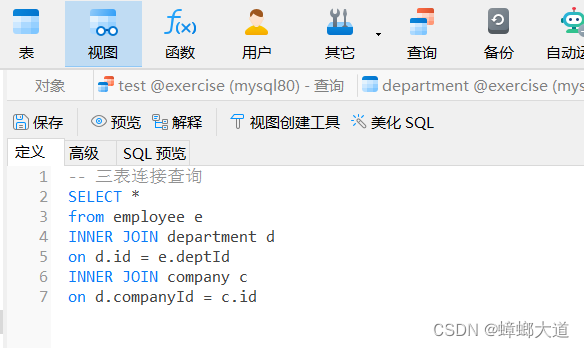
mysql驱动程序
mysql驱动程序:连接mysql的数据和内存中的数据
常用mysql驱动程序:mysql,mysql2
const mysql = require('mysql2')
// 1.创建连接池
const connectionPool = mysql.createPool({
host: 'localhost',
port: 13306,
user: 'root',
password: 'root',
database: 'koa-apis',
connectionLimit: 5
})
// 2.测试是否连接成功
connectionPool.getConnection((err, connection) => {
if (err) {
console.log('数据库连接失败', err);
return
}
connection.connect(err => {
if (err) {
console.log('和数据库交互失败', err);
} else {
console.log('和数据库交互成功');
}
})
})
// 3.定义预处理语句
// 防止sql注入
const statement = 'SELECT * FROM `student` WHERE id > ? AND name LIKE ?'
// 4.执行sql语句
// 使用promise语法
const connection = connectionPool.promise()
connection.execute(statement, [2, '%c%']).then(res => {
const [val, fields] = res
console.log(val);
}).catch(err => {
console.log(err);
})
ORM
ORM(Object Relational Mapping)对象关系映射
- 将程序中的对象和数据库关联
- 使用统一的接口,完成对不用数据库的操作
node中常用ORM框架
- Sequelize
- TypeORM
连接到数据库
const { Sequelize } = require('sequelize');
const sequelize = new Sequelize('school', 'root', 'root', {
host: 'localhost',
dialect: 'mysql',
port: '13306',
logging: false // 关闭打印日志
});
// 测试连通性
(async function () {
try {
await sequelize.authenticate();
console.log('Connection has been established successfully.');
} catch (error) {
console.error('Unable to connect to the database:', error);
}
})();
module.exports = sequelize
模型定义和同步
const sequelize = require('./db');
const { DataTypes } = require('sequelize');
const Admin = sequelize.define('Admin', {
// 在这里定义模型属性
loginId: {
type: DataTypes.STRING,
allowNull: false
},
loginPwd: {
type: DataTypes.STRING,
allowNull: false
},
name: {
type: DataTypes.STRING,
allowNull: false
}
}, {
createdAt: true,
updatedAt: true,
paranoid: true, // 记录删除的时间,不会真正删除数据
freezeTableName: false // 表名是否添加复数
});
(async function () {
await Admin.sync({ alter: true })
console.log('Admin 同步完成');
})();
module.exports = Admin
表关系(外键)
1.一对一
A.hasOne(B) 关联意味着 A 和 B 之间存在一对一的关系,外键在目标模型(B)中定义.
A.belongsTo(B)关联意味着 A 和 B 之间存在一对一的关系,外键在源模型中定义(A).
2.一对多
A.hasMany(B) 关联意味着 A 和 B 之间存在一对多关系,外键在目标模型(B)中定义.
3.多对多
A.belongsToMany(B, { through: ‘C’ }) 关联意味着将表 C 用作联结表,在 A 和 B 之间存在多对多关系. 具有外键(例如,aId 和 bId)
三层架构
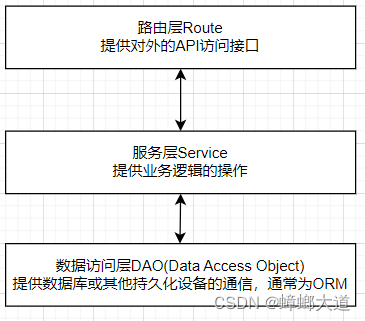
增删改查
bookService.js
const Book = require("../models/Book");
// 1.增
exports.addBook = async function (obj) {
// 业务逻辑判断
// ...
const ins = await Book.create(obj);
return ins.toJSON();
};
// 2.删
exports.deleteBook = async function (id) {
const result = await Book.destroy({
where: {
id,
},
});
return result;
};
// 3.改
exports.updateBook = async function (id, obj) {
const result = await Book.update(obj, {
where: {
id,
},
});
return result;
};
数据的导入导出
通过后缀名为.sql的文件,导入导出数据
导入sql文件
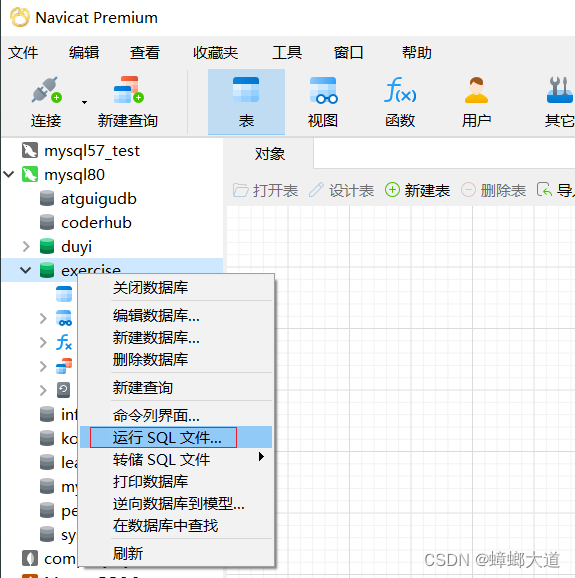
导出sql文件
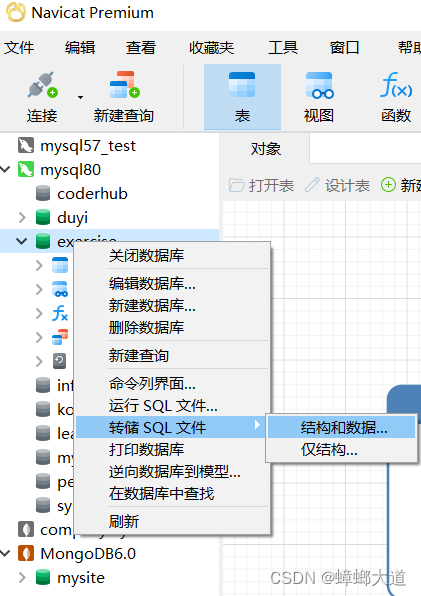





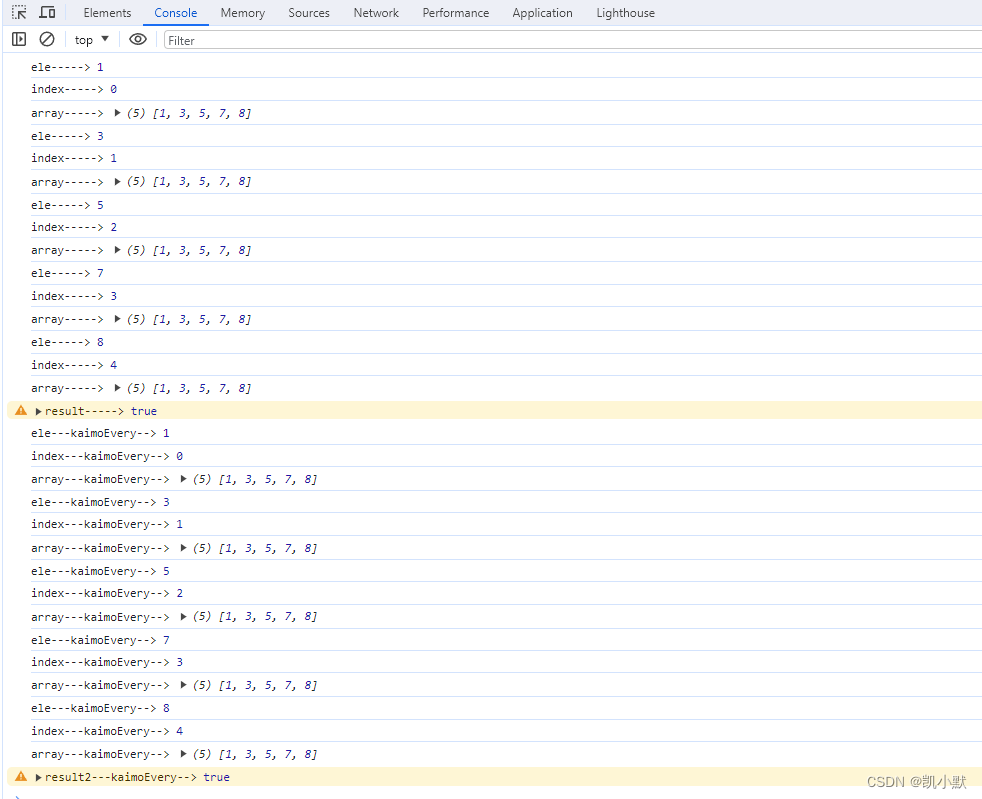
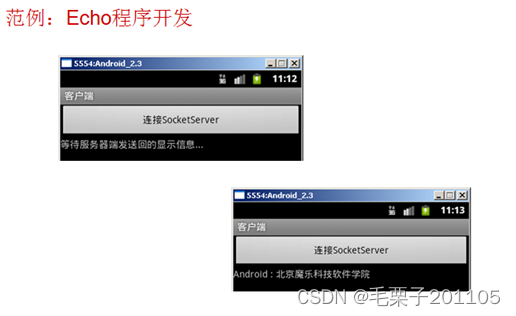





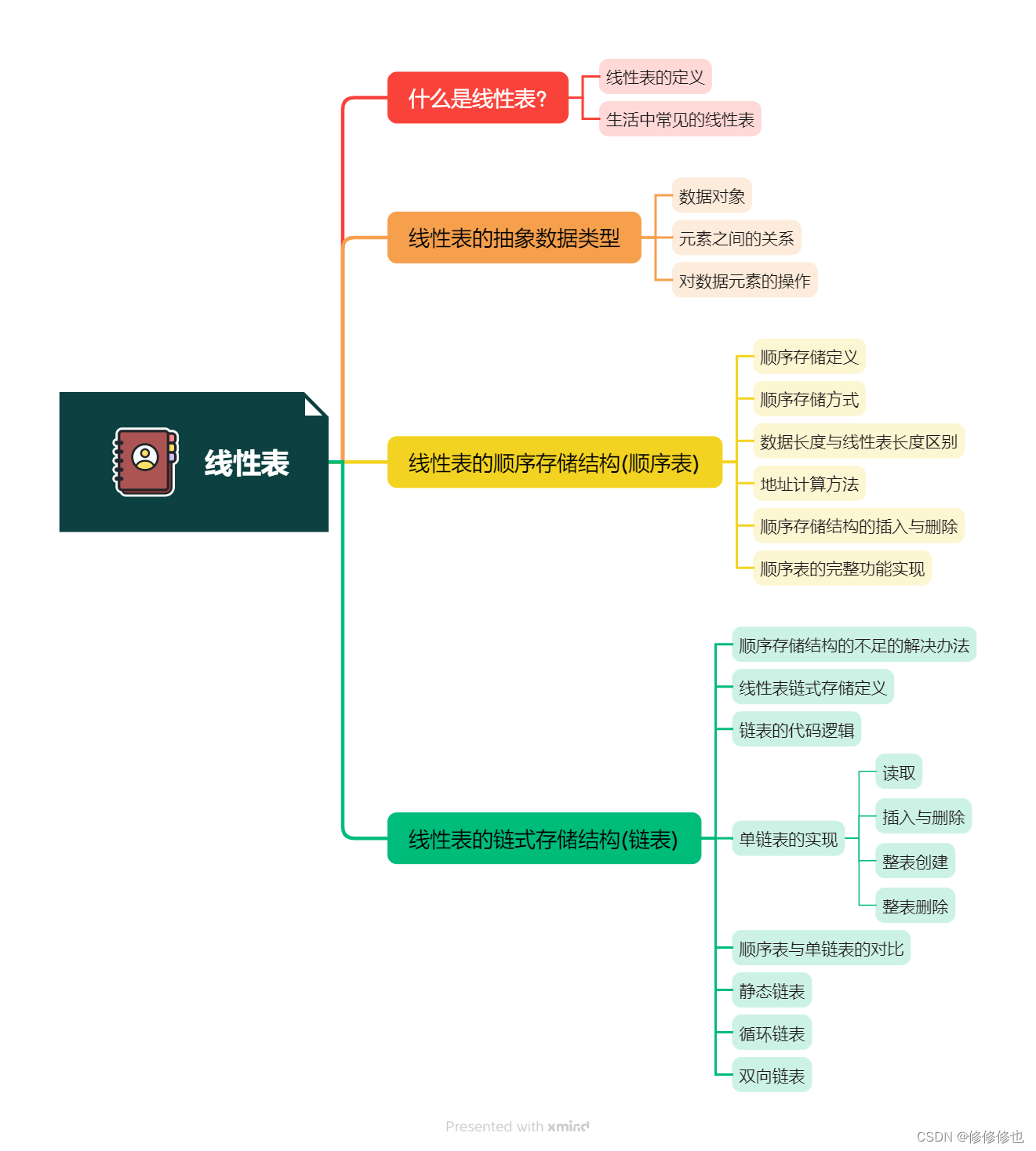


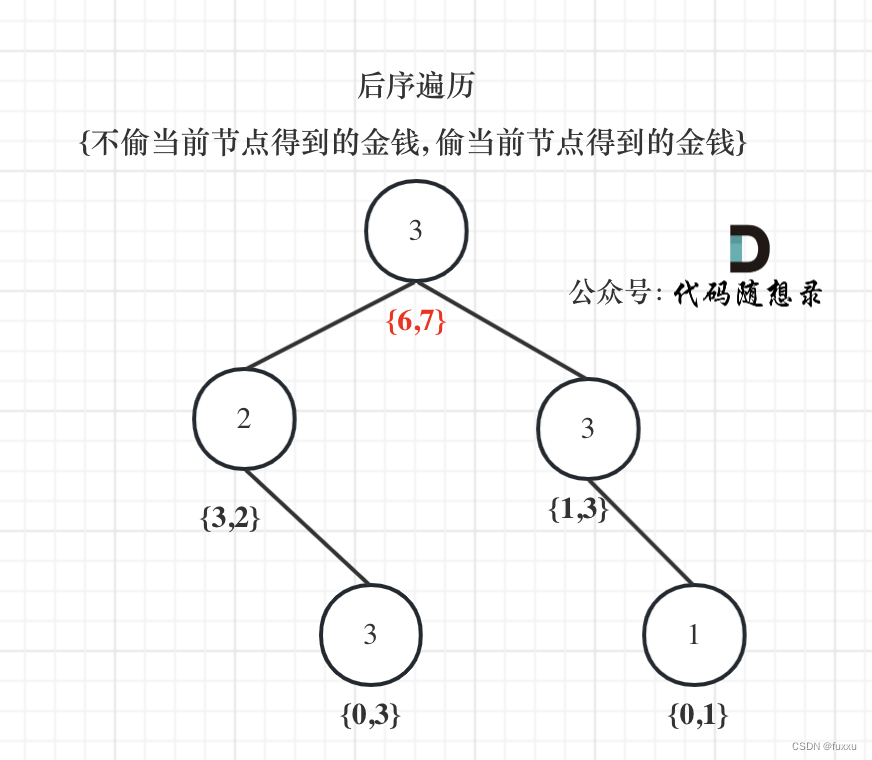
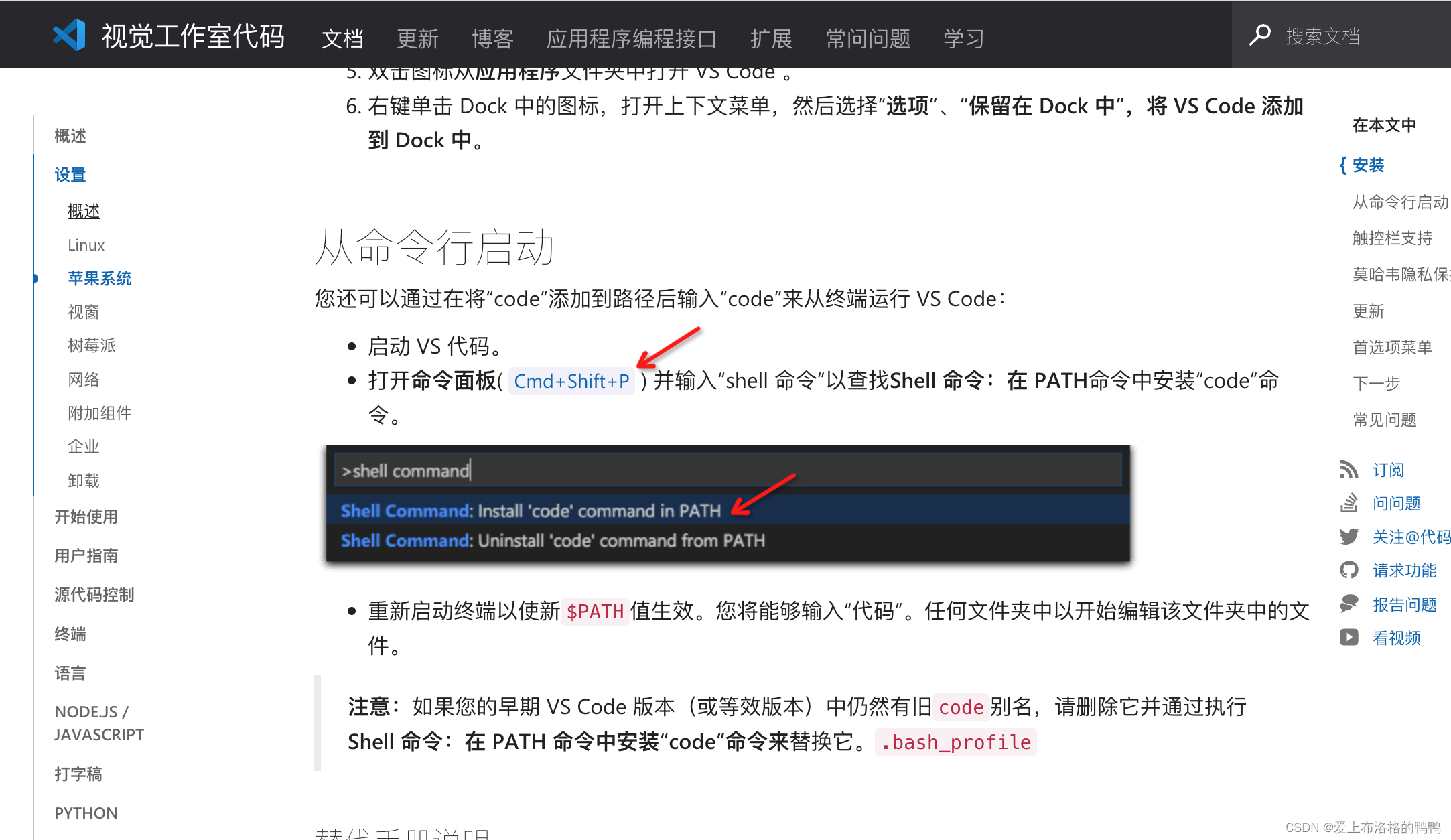
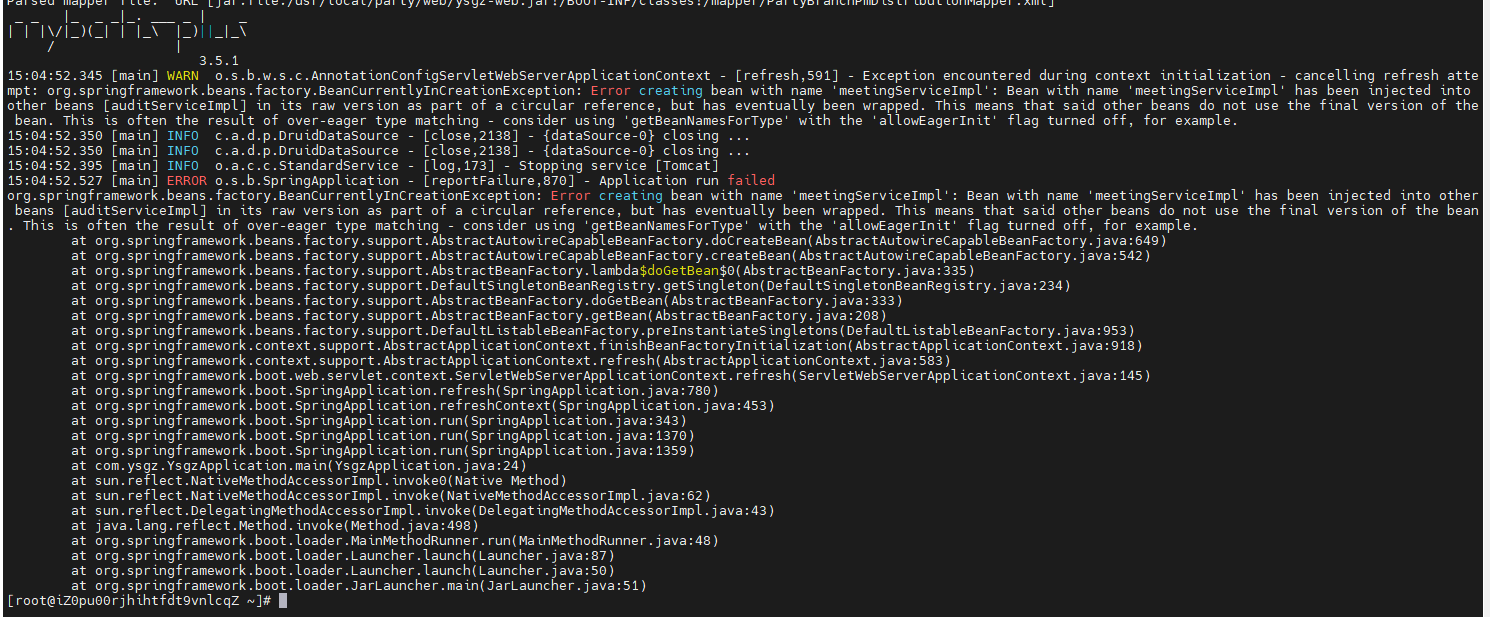
![[工业自动化-6]:西门子S7-15xxx编程 - PLC系统硬件组成与架构](https://img-blog.csdnimg.cn/b163af75170e481e968a20cd1d398e1a.png)
